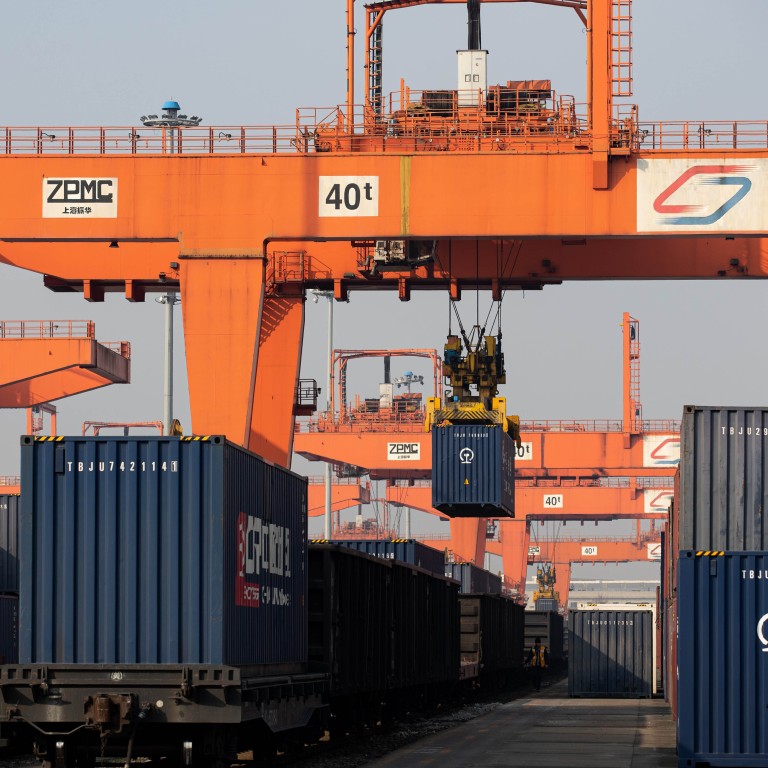
China trade: rebound continues as imports surge 38.1 per cent in March, exports up 30.6 per cent
- Exports grew by 30.6 per cent in March compared to a year earlier, partly skewed by low base from 2020
- Imports grew by 38.1 per cent in March from a year earlier to US$227.34 billion, well above expectations of 24.5 per cent growth
China’s imports and exports continued their strong rebound in March, data released on Tuesday showed.
Imports grew by 38.1 per cent in March from a year earlier to US$227.34 billion, up from the 22.2 per cent growth seen in January and February, and well above the Bloomberg survey, which predicted 24.5 per cent growth.
This was the sixth consecutive period of import growth but, again, the import drop of 1 per cent in March last year means the latest figures started from a low base.
China’s total trade surplus stood at US$13.8 billion in March, compared to US$103.25 billion in January and February.
“Export and import growth remained elevated in year-on-year terms last month, even as base effects turned slightly less favourable. In level terms, exports dropped back slightly but imports continued to rise thanks to strengthening domestic demand. We think shipments will remain resilient in the near-term but will soften later this year,” said Julian Evans-Pritchard, senior China economist at Capital Economics.
“Taken together, the trade surplus narrowed to US$13.8 billion, its lowest since the pandemic hit last year. But trade surplus remained large after adjusting for seasonality, edging down from US$58 billion to $US49 billion.”
China’s toy exports in high demand during coronavirus lockdowns, especially in the United States
In the first quarter, China’s exports grew by 49 per cent, while imports grew by 28 per cent. China’s trade surplus stood at US$116.35 in the first quarter.
Imports from the US rose by 69.2 per cent in the first quarter to US$46.545 billion, while China’s exports to the US rose by 74.7 per cent to US$119.183 billion.
China’s imports from the European Union rose by 33 per cent to US$73.413 billion in the first quarter, while exports rose by 56.7 per cent to US$110.234 billion.
Overall speaking, there are many positive factors but external challenges have not diminished. Foreign trade still has a long way to go to ensure steady growth
For the Association of Southeast Asian Nations (Asean), imports rose by 33.2 per cent to US$86.287 billion, while China’s exports rose by 37.1 per cent to US$105.142 billion.
“Overall speaking, there are many positive factors but external challenges have not diminished. Foreign trade still has a long way to go to ensure steady growth,” he said.

.JPG?itok=J8tgfPmW&v=1659948715)
